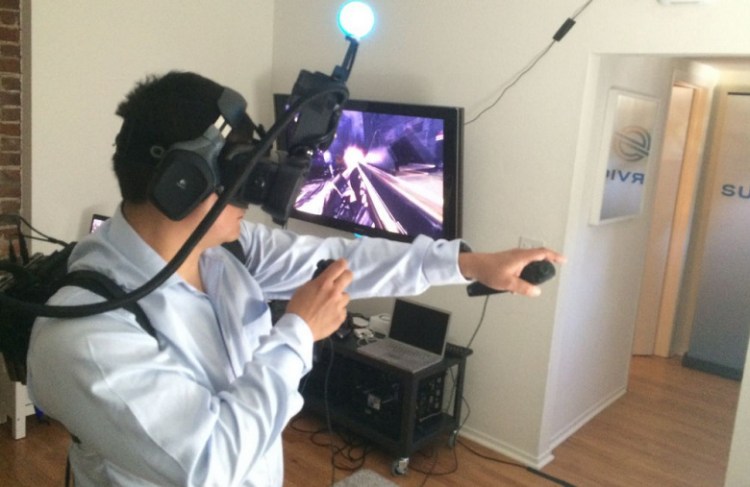The New Nintendo 3DS still looks like a 3DS: The screens are a little larger, but still lower-definition than some other high end portable gaming devices, and it has more bulk and less oomph than your smartphone. Still, it’s designed for gaming, and that commitment shows, making this a favorite portable device four years after the original launched.
The Hyperkin RetroN 5: Play your favorite video games of the past
Hyperkin’s announcement of its RetroN console emulator, which allows gamers to play titles from nine previous consoles, was marred by release delays and some emulation hiccups at launch.
Now that the firmware has been updated, however, the RetroN 5 appears to offer what it promised: the ability to play NES, SNES, Super Famicom, Genesis, Mega Drive, Famicom, Game Boy, Game Boy Color, and Game Boy Advance games on your TV via an HDMI connection.
It’s hard to resist that kind of retro action, even if it’s accomplished via Android emulation and doesn’t have wireless connection capabilities. Even GamesBeat’s snobbiest retro gamer agrees. The RetroN offers one of the best ways on the market to scratch that retro itch, at $160.
Backlit keyboards with 17 million colors, plus interactions
Backlit keyboards, even those with programmable colors, have for years offered gamers the ability to play in the dark. But this was the year that virtually every high-end keyboard manufacturer jumped into the fray, giving us keyboards that you can program with up to 16.8 million colors based on what game you are playing, what mode you are in, the animations you’d like to see — even what keys you press.
How much will it add to your gameplay? Probably not a lot, beyond that aforementioned ability to see in the dark. But how much fun it is to program and see happen? A ton.
The Logitech G19s ($200), with its gimmicky LCD screen, has been a solid entry in this space for a while. But I prefer the mechanical action and wildly programmable lights displays on the new Razer BlackWidow Chroma ($170). Even better, try the Corsair K95 RGB ($190), with its psychedelic ripple effects and nifty Cherry MX-switched keys.
Alienware Alpha: the best Steam Machine that wasn’t
The year 2014 was supposed to mark the triumphant debut of the Steam Machine, a console-like device that could plug into your TV, run a special Linux-based OS and give you access to all your favorite Steam PC games in a more living-room-friendly format.
Unfortunately, that launch has been pushed off until sometime this year. That didn’t stop Dell’s Alienware line from launching its own pre-Steam-Machine machine: the Alienware Alpha. This shiny black console-like box runs Windows 8.1, comes with an Xbox controller, plugs into your TV with an HDMI cable, and can be upgraded to full Steam Machine status when the new platform goes live.
The Alpha isn’t as powerful as current gaming desktops, but it’s beefy enough to run most PC games and installation is a breeze. (For more, see the GamesBeat preview.) Think of it as an expensive gateway drug for console gamers, starting at $550.
Oculus Rift: Are we there yet?
Oculus Rift‘s 2015 launch as a consumer product still isn’t certain — you can only buy it as part of a $350 development kit now — and yet it has already captured the imaginations of players everywhere.
The early teases of the 3D virtual reality headset’s potential created hugely long lines at gaming conventions, even though the tech is still very much a work in progress. Picking out a target against a background in a game demo can still be challenging, for instance; nobody’s really sure what we’re going to do about controllers; and pity the poor folks who wear glasses.
3D VR gaming is the holy grail of the industry, an experience so immersive that you actually feel like you are moving through it. Gaming (and porn, though early development has been crude — ha ha) has been the driving force behind the headset’s $2.44 million Kickstarter, its two development kits, and Facebook’s eventual $2 billion purchase of parent company Oculus VR.
The final version is likely to cost what the development kits have — somewhere between $200 and $400 — making it as expensive as a console in its own right. But some big names (Sony, Samsung, Apple, Facebook) are betting on its success. Several game developers have announced their own titles in development for the platform.
For a sneak peak, you can try the Samsung Gear VR headset, which is available now for $340 and uses Oculus tech combined with a Samsung Galaxy Note 4 wireless phone. So far, it mostly plays free demos and mini-games.
VentureBeat's mission is to be a digital town square for technical decision-makers to gain knowledge about transformative enterprise technology and transact. Learn More





